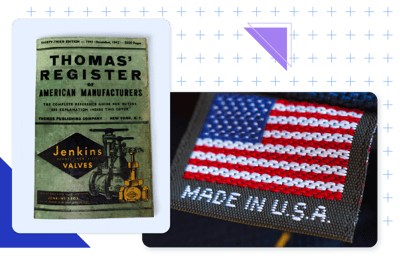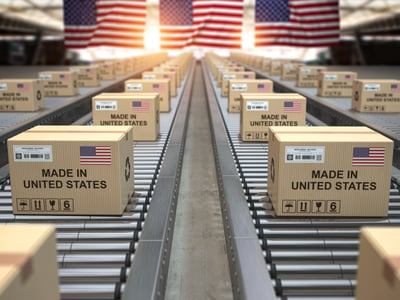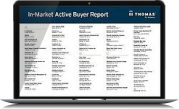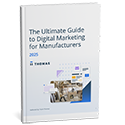
From Cold Calls to Qualified Leads: Using PPC Data to Fuel Sales Success
For industrial suppliers, the pursuit of qualified leads can be challenging and time-consuming. Many sales teams still lean heavily on cold calls — a tedious, low-conversion strategy that often results in wasted effort and flat-out rejection. But what if you could replace those fruitless hours of phone calls and emails with a stream of "warmed up" leads, complete with data on their interests and needs?
This is where pay-per-click (PPC) advertising and the actionable data it provides can change the game. By adopting a performance-based approach, you can stop paying for simple visibility and instead pay for genuine interest, ensuring your sales team only engages with prospects who have already demonstrated a clear need for your products or services.

3 Tips to Stay Ahead of Tariffs for Holiday Procurement Planning This Year
With global tariffs continuing to shift, it’s smart to get a head start on end-of-year planning and know what your options are when it comes to sourcing and shipping. Here are three tips for making sure this holiday season runs smoothly.
Read More »
A Guide to Thomas Industry Update (TIU)
For industrial marketers, reaching the right audience with the right message is a constant challenge. You need a channel that not only cuts through the noise but also positions your brand as a trusted authority. Thomas Industry Update (TIU) is a daily newsletter designed to do just that, delivering manufacturing news, data, and best practices directly to the inboxes of key industry buyers.
This guide provides a comprehensive overview of Thomas Industry Update, detailing what it is, who it reaches, and how you can leverage it to achieve your marketing goals. We will explore its value to advertisers and the various advertising formats available to help you connect with a dedicated and engaged audience of manufacturing leaders.
Read More »
Industrial Icons: IMC Highlights the Value of Its Services with a Thomas Marketing Program
Thomas has been connecting industrial buyers and suppliers for more than 125 years. The Industrial Icons blog series celebrates the longtime customers who have grown their businesses with Thomas and the marketing and advertising solutions that have evolved along with them over the years.
Read More »
Why 'Contact Us' Isn’t Enough: Crafting Offers That Speak to Every Buyer Stage
Generating quality leads is crucial for industrial companies. By integrating elements like compelling offers, clear calls to action that encourage leads to trade their contact information for your expertise, optimized landing pages, and multi-channel promotion, you can significantly enhance your lead generation efforts – and build your business lead by lead.
Read More »
The Power of Thomasnet Advertising: More Exposure, Better Leads
Thomasnet® has been a trusted destination for industrial sourcing for more than 125 years. Our platform has more than 1 million active buyers who return to Thomasnet again and again to search our database of 500,000 North American manufacturers for the products and services that keep their supply chains strong.
In this article, we’ll go over the basics of the platform and how a Thomasnet listing can benefit industrial companies like yours.
Read More »

Carrying Forward Nearly 130 Years of American Manufacturing Excellence

When Thomas was founded in 1898, it championed “Made In America,” a phrase that takes on greater weight today in light of the world’s persistent and significant supply chain disruptions.
As I step into my role as General Manager of Thomas, I'm struck by both tremendous responsibility and extraordinary opportunity to lead a brand that has been the backbone of American manufacturing for nearly 130 years. I am excited to take the helm of Thomas and lead a great team that is committed to modernizing this iconic brand while preserving its foundational mission of advancing American manufacturing.
Read More »
The Importance of Marketing and Advertising for Manufacturers During Times of Uncertainty
The global manufacturing landscape is undergoing transformations that are fundamentally changing the way businesses operate. From the effects of COVID-19 and natural disasters to the rise of AI and shifts in trade policies, the industry has shown remarkable resilience in navigating an ever-evolving environment. In response to these challenges, manufacturers have reimagined and adapted their operations, embracing innovative ways of doing business.
Read More »
Thomas Promotes U.S. Manufacturing by Connecting Industrial Buyers and Suppliers
Supply chain reshoring and the growing number of sourcing options for industrial buyers have led to new and evolving challenges for U.S. manufacturers. With more options than ever before, buyers can feel overwhelmed when searching for suppliers that meet their needs, while suppliers need a way to differentiate their offerings and stand out from the competition. Thomas has been helping industrial buyers with supplier discovery for 127 years, forging connections that drive U.S. manufacturing forward.
Here’s how Thomas’ services and solutions simplify procurement and support business growth.
Read More »




